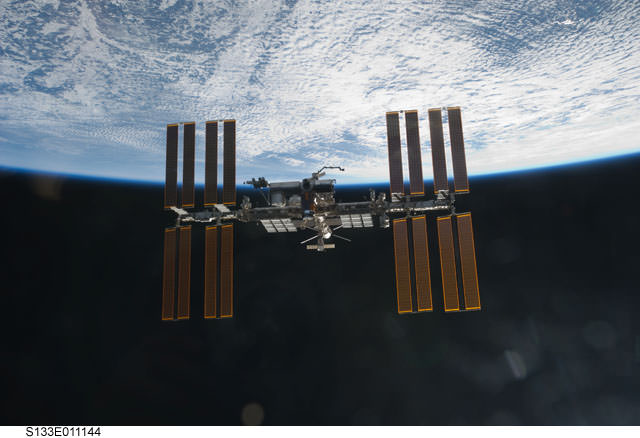[/caption]
A new opportunity is available for students and teachers to be part of history and fly the very first Student Spaceflight Experiments Program (SSEP) mission to the International Space Station. This program is open to students from any country that is part of the ISS partnership, in grades 5-12 as well as colleges and universities.
This opportunity offers real research done on orbit, with students designing and proposing the experiments to fly to the space station.
“Science is not something that can only be carried out by an elite community of researchers,” Dr. Jeff Goldstein, the Director for the National Center for Earth and Space Science Education told Universe Today. “It’s really just organized curiosity, and can be undertaken by anyone. So to inspire our next generation of scientists and engineers, we thought we’d give students an opportunity to do real scientific research on America’s newest National Laboratory – the International Space Station.”
SSEP is a program that launched in June 2010 by the National Center for Earth and Space Science Education in partnership with NanoRacks, LLC, a company that is working with NASA under a Space Act Agreement as part of the utilization of the International Space Station as a National Laboratory.
Two previous SSEP missions flew on the final shuttle flights, but this is the first to be part of the ISS science program.
NanoRacks hopes to stimulate space station research by providing a very low-cost 1 kilogram platform and other hardware that puts micro-gravity projects within the reach of universities and small companies, as well as elementary and secondary schools through SSEP. So, this is actually a commercial space program and not a NASA program.
On the previous SSEP missions with the space shuttles, 1,027 student team proposals were submitted with 27 experiments selected to fly, representing the 27 communities.
“We know even 5th graders can rise to this challenge and amaze us all,” Goldstein said, “and they already proved it on the final two flights of the Space Shuttle.”
The countries that can participate are the US, Canada, Japan and the European nations that are partners in the ISS program.
SSEP Mission 1 to ISS is now open for registration, with participating communities selected no later than September 30, 2012, so this is time critical.
Goldstein noted there are a significant number of resources that make this process straight-forward, including an instructionally designed recipe allowing teachers to easily facilitate the introduction of the program in the classroom, conduct experiment design, and do the proposal writing.
There are five categories of participation:
Pre-College (the core focus for SSEP) in the U.S., (grades 5-12), with a participating school district—even an individual school—providing stunning, real, on-orbit RESEARCH opportunities to their upper elementary, middle, and high school students
2-Year Community Colleges in the U.S., (grades 13-14), where the student body is typically from the local community, providing wonderful pathways for community-wide engagement
4-Year Colleges and Universities in the U.S., (grades 13-16), with an emphasis on Minority-Serving Institutions, where the program fosters interdisciplinary collaboration across schools and departments, and an opportunity for formal workforce development for science majors
Communities in the U.S. led by Informal Education or Out-of-School Organizations, (e.g., a museum or science center, a homeschool network, a boy scout troop), because high caliber STEM education programs must be accessible to organizations that promote effective learning beyond the traditional classroom
Communities in ISS Partner Nations: EU nations, Canada, and Japan with participation through NCESSE’s Arthur C. Clarke Institute for Space Education.
Goldstein said the program is a U.S. national Science, Technology, Engineering, and Mathematics (STEM) education initiative that gives up to 3,200 students across a community—middle and high school students (grades 5-12), and/or undergraduates the ability to fly their own experiments in low Earth orbit on the International Space Station.
For more information see the SSEP website
Read about the experience of previous SSEP program schools on the space shuttle
Watch a video of Dr. Jeff Goldstein talking about SSEP.

